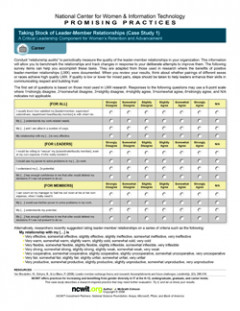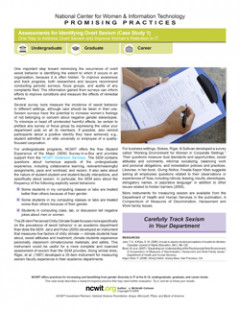- Videos
- More Media
- All
- Aspirations in Computing
- Flashtalk
- Other
- Race and Intersectionality
- Summit General
- Summit Plenary
2017 NCWIT Summit – Summit Closing
LUCY SANDERS: Hi, y’all. Okay, so we’re gonna give you back a little time to enjoy the resort. There’s a lunch, a grab-and-go lunch for ...
Read More
Conversations for Change: NCWIT Summit: #MeToo, Men & Tech: Possibilities & Perils in a Time of Change presented by Jackson Katz
[upbeat music ] [audience applauding] LUCY SANDERS: Oh, that’s horrible. Hello. Audience: Hello. LUCY SANDERS: Oh, good, good, good. Hi, I’m Lucy Sanders, I’m the ...
Read More
Melinda Gates, a passionate supporter for women in tech
About the Bill & Melinda Gates Foundation Melinda Gates is the Co-chair of the Bill & Melinda Gates Foundation and a passionate supporter of getting ...
Read More
Conversations for Change: NCWIT Summit: Pink Brain, Blue Brain: What’s the Real Story When It Comes To “Gender Differences” presented by Lise Eliot
[upbeat music] Man: A break for lunch, all right. Now? Woman: Not yet, don’t do it. [upbeat music] JEFF FORBES: Hello, hope you guys had ...
Read More
- All
- Actions & Opportunities
- Articles & Blogs
- Case Studies & Examples
- Courses, Webinars & Conversations
- Posters & Handouts
- Posters & Promotions
- Statistics & Research Reports
- Talking Points
- Tips & Top 10s
- Tools and Techniques
Supervising-in-a-Box Series: Employee Development
Supervising-in-a-Box Series helps establish supportive and effective relationships with a diverse range of employees. This box explores ways to reduce or remove unconscious bias, discriminatory ...
Read More
How Can REUs Help Retain Female Undergraduates?
Undergraduates with positive research experiences feel more confident and motivated to enter graduate programs. To facilitate successful REUs, supportive faculty advisors or graduate mentors should ...
Read More
How Can Leader-Member Relationships Promote Women’s Retention and Advancement?
Positive leader-member relationships are characterized by exchanges of trust, respect, and low formality. They measurably improve performance, job satisfaction, and commitment.
Read More
Institutional Barriers & Their Effects: How can I talk to colleagues about these issues?
Institutional barriers (IBs) are policies, procedures, or situations that systematically disadvantage certain groups of people. IBs exist in any majority-minority group situation. When an initial ...
Read More
How Does Combating Overt Sexism Affect Women’s Retention?
Sexism has measurably harmful effects, but sexist behavior can be minimized. Instructors and supervisors can practice zero tolerance and facilitate positive peer interactions, and they ...
Read More
Pair Programming-in-a-Box: The Power of Collaborative Learning
Pair programming is a collaborative learning method in which students program in pairs instead of individually. This approach significantly improves college students’ programming competency and ...
Read More












